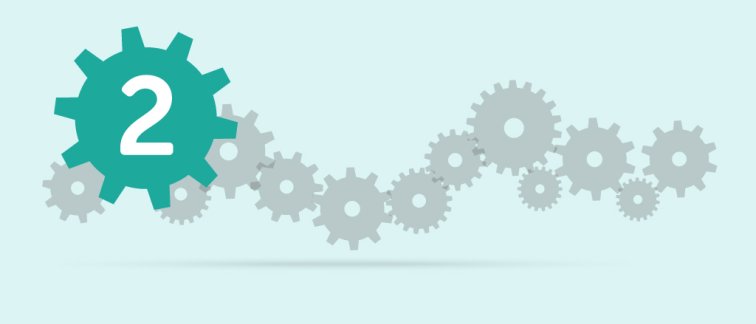Did you know that there are around 170 theories, models and frameworks (TMFs) used in the field of Implementation Science? A brief outline of available material on this topic is given here.
General work on implementation TMFs
- Damschroder, L. J. (2020). Clarity out of chaos: use of theory in implementation research.Psychiatry research,283, 112461. https://doi.org/10.1016/j.psychres.2019.06.036
- Nilsen, P. (2020). Making sense of implementation theories, models, and frameworks. InImplementation Science 3.0(pp. 53-79). Springer, Cham.
- Tabak, R. G., Khoong, E. C., Chambers, D. A., & Brownson, R. C. (2012). Bridging research and practice: models for dissemination and implementation research.American journal of preventive medicine,43(3), 337-350. https://doi.org/10.1016/j.amepre.2012.05.024
- Birken, S. A., Rohweder, C. L., Powell, B. J., Shea, C. M., Scott, J., Leeman, J., ... & Presseau, J. (2018). T-CaST: an implementation theory comparison and selection tool.Implementation Science,13, 1-10. https://doi.org/10.1186/s13012-018-0836-4
- Dissemination & Implementation Models Webtool | An interactive, online resource designed to help researchers and practitioners navigate D&I Models through planning, selecting, combining, adapting, using, and linking to measures | www.dissemination-implementation.org
- Website | Pick a theory, model, or framework | Implementation Science Resource Hub | University of Washington | https://impsciuw.org/implementation-science/research/frameworks/
- YouTube video |Theories and Frameworks in Implementation Science | Rachel Shelton | IRL – Research and Science Course | https://www.youtube.com/watch?v=fdaTFgX0II0
Well-known process models
Process models describe/guide the process of translating research into practice.
- Knowledge to action | Graham, I. D., Logan, J., Harrison, M. B., Straus, S. E., Tetroe, J., Caswell, W., & Robinson, N. (2006). Lost in knowledge translation: time for a map?Journal of continuing education in the health professions,26(1), 13-24. https://doi.org/10.1002/chp.47
- Getting to outcomes | Chinman, M., Hunter, S. B., Ebener, P., Paddock, S. M., Stillman, L., Imm, P., & Wandersman, A. (2008). The getting to outcomes demonstration and evaluation: an illustration of the prevention support system.American journal of community psychology,41(3-4), 206-224 | https://www.rand.org/health-care/projects/getting-to-outcomes.html
- Model by Grol and Wensing | Grol, R., & Wensing, M. (2004). What drives change? Barriers to and incentives for achieving evidence‐based practice.Medical Journal of Australia,180, S57-S60. https://doi.org/10.5694/j.1326-5377.2004.tb05948.x
Well-known determinant frameworks
Determinant frameworks understand and/or explain influences on implementation outcomes.
- CFIR | Consolidated Framework for Implementation Research | Damschroder, L. J., Aron, D. C., Keith, R. E., Kirsh, S. R., Alexander, J. A., & Lowery, J. C. (2009). Fostering implementation of health services research findings into practice: a consolidated framework for advancing implementation science.Implementation science,4(1), 1-15. | www.cfirguide.org
- CFIR 2.0 | Damschroder, L. J., Reardon, C. M., Widerquist, M. A. O., & Lowery, J. (2022). The updated Consolidated Framework for Implementation Research based on user feedback.Implementation science,17(1), 1-16. https://doi.org/10.1186/s13012-022-01245-0
- Theoretical Domains Framework | Michie, S., Atkins, L., & West, R. (2014).The behaviour change wheel.A guide to designing interventions.1st ed. Great Britain: Silverback Publishing, 1003-1010.
Hybrid: Determinant and process
- EPIS | Exploration, Preparation, Implementation, and Sustainment | Moullin, J. C., Dickson, K. S., Stadnick, N. A., Rabin, B., & Aarons, G. A. (2019). Systematic review of the exploration, preparation, implementation, sustainment (EPIS) framework. Implementation Science, 14(1), 1-16. | https://EPISFramework.com
- PARIHS | Promoting Action on Research Implementation in Health Services | Harvey, G., & Kitson, A. (2015). Implementing evidence-based practice in healthcare: a facilitation guide. Routledge.
- I-PARIHS | Integrated Promoting Action on Research Implementation in Health Services | Harvey, G., & Kitson, A. (2015). PARIHS revisited: from heuristic to integrated framework for the successful implementation of knowledge into practice. Implementation science, 11(1), 1-13. https://doi.org/10.1186/s13012-016-0398-2
Well-known classic theories
Originally from other fields, can be applied to provide understanding and/or explanation of aspects of implementation.
- Theory of Diffusion | Rogers, E. M. (2003). Diffusion of innovations. New York: Free Press.
Well-known implementation theories
Developed by implementation researchers, provide understanding and/or explanation of aspects of implementation.
- The Behaviour Change Wheel, including COM-B | Capability, Opportunity, Motivation, Behaviour | Michie, S., Van Stralen, M. M., & West, R. (2011). The behaviour change wheel: a new method for characterising and designing behaviour change interventions. Implementation science, 6(1), 1-12. https://doi.org/10.1186/1748-5908-6-42
- Normalization Process Theory | May, C., & Finch, T. (2009). Implementing, embedding, and integrating practices: an outline of normalization process theory. Sociology, 43(3), 535-554. https://doi.org/10.1177/0038038509103208
Well-known evaluation frameworks
Specify aspects of implementation that could be evaluated to determine implementation success.
- RE-AIM | Reach, Effectiveness, Adoption, Implementation, Maintenance| Glasgow, R. E., Vogt, T. M., & Boles, S. M. (1999). Evaluating the public health impact of health promotion interventions: the RE-AIM framework.American journal of public health,89(9), 1322-1327. | RE-AIM – Home – Reach Effectiveness Adoption Implementation Maintenance
- PRECEDE-PROCEED | Predispoing, Reinforcing and Enabling Constructs in Educational Diagnosis and Evaluation-Policy, Regulatory, and Organizational Constructs in Educational and Environmental Development | Green, L. W., & Kreuter, M.W. (2005). Health Program Planning:An Educational and Ecological Approach. New York: McGraw-Hill.
- Implementation outcomes | Proctor, E., Silmere, H., Raghavan, R., Hovmand, P., Aarons, G., Bunger, A., ... & Hensley, M. (2011). Outcomes for implementation research: conceptual distinctions, measurement challenges, and research agenda.Administration and Policy in Mental Health and Mental Health Services Research,38(2), 65-76. https://doi.org/10.1007/s10488-010-0319-7
- CFIR Outcomes Addendum | Consolidated Framework for Implementation Research Outcomes Addendum | Damschroder, L. J., Reardon, C. M., Opra Widerquist, M. A., & Lowery, J. (2022). Conceptualizing outcomes for use with the Consolidated Framework for Implementation Research (CFIR): the CFIR Outcomes Addendum.Implementation science,17(1), 1-10. https://doi.org/10.1186/s13012-021-01181-5
- Mettert, K., Lewis, C., Dorsey, C., Halko, H., & Weiner, B. (2020). Measuring implementation outcomes: An updated systematic review of measures’ psychometric properties.Implementation Research and Practice,1. https://doi.org/10.1177/2633489520936644
Chapter overview
- Implementation Science Knowledge Hub Overview
- 1. Introduction to Implementation Science
- 2. Implementation theories, models & frameworks
- 3. Implementation research methods, designs, measures & publishing
- 4. Implementation strategies
- 5. Dissemination
- 6. De-implementation
- 7. Sustainability
- 8. Participatory research & stakeholder engagement

